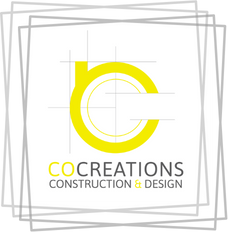
The Global pandemic has had a distinct and profound impact on residential construction. While it is still a hot-button topic, and we are just now seeing a more detailed picture of the effects of the pandemic, it has made negative and positive changes. From the socio-economic consequences of COVID-19 to the worldwide reaction of governments and cultures, it has caused many disruptions in every aspect of the residential construction industry.
Supply chain disruptions caused shortages of construction materials, leading to increased prices and project delays. Safety concerns and social distancing requirements slowed down productivity on job sites, exacerbating labor shortages. Changes in demand and preferences, driven by the shift to remote work and a desire for more space, forced builders to adapt their offerings. Government regulations and permitting delays further hampered construction activities, adding to project timelines and costs. Additionally, economic uncertainty resulted in challenges in obtaining financing for new projects and decreased purchasing power for some potential homebuyers. Despite these challenges, the pandemic also spurred innovation and adaptation in the industry as builders sought creative solutions to meet changing market dynamics and consumer needs.
The COVID-19 pandemic has changed residential construction, reshaping the industry in multiple ways. One notable effect has been the impact on the global supply chain, leading to shortages and price increases for construction materials such as lumber, steel, and various building components. These supply chain disruptions have inflated project costs and caused delays in construction timelines as builders struggle to obtain necessary materials. Consequently, developers and contractors have had to navigate these challenges by seeking alternative suppliers, adjusting project schedules, and implementing cost-saving measures to mitigate the impact on their operations. Shortages in labor to do the work have also affected the residential construction business. Good workers are harder to come by, making contractors decrease available workers due to rising rates in supply costs.
Another significant impact of COVID-19 on residential construction has been shifts in consumer preferences and housing trends, influencing the types of residential construction projects done by developers. With remote work becoming more prevalent, there has been an increased demand for homes with dedicated office spaces, high-speed internet access, and larger living areas. Lockdown measures and social distancing requirements have also led many individuals and families to prioritize outdoor amenities and private outdoor spaces, such as gardens, balconies, and patios. As a result, developers have had to adapt their designs and offerings to meet these changing preferences, potentially impacting the design, size, and location of residential construction projects.
Furthermore, the pandemic has brought about the implementation of stringent health and safety protocols on construction sites. Social distancing requirements, enhanced sanitation measures, and restrictions on the number of workers allowed on-site have slowed down productivity and increased project timelines. Moreover, concerns about the health and safety of construction workers have prompted many companies to invest in additional training, personal protective equipment (PPE), and technology solutions to ensure compliance with health guidelines. While these measures are essential for safeguarding the well-being of workers and minimizing the spread of the virus, they have also introduced new challenges in maintaining productivity and efficiency on construction projects.
The permitting process has also created delays and challenges for developers and builders. Government regulations aimed at controlling the spread of the virus, such as lockdown measures and restrictions on in-person interactions, have disrupted the traditional workflow of obtaining permits and approvals. Many permitting offices have transitioned to remote work, leading to slower processing times and communication. Additionally, the closure of government offices and the implementation of social distancing measures have limited the availability of in-person services, such as submitting plans or obtaining signatures, further slowing down the permitting process. As a result, developers and builders have had to adjust their timelines and strategies to account for these delays, potentially leading to increased project costs and longer completion times for residential construction projects.
Economic uncertainty stemming from the pandemic has led to challenges in obtaining financing for new construction projects. Lenders may have become more cautious, tightening lending criteria and raising interest rates. It is now more difficult for developers to secure loans for their projects. Additionally, fluctuations in the housing market and consumer confidence have influenced the demand for new homes, impacting developers’ ability to sell units and generate revenue. For potential homebuyers, unemployment, and income instability resulting from the pandemic have diminished purchasing power and made it harder to qualify for mortgages, reducing demand for new residential construction. Overall, the financial impacts of COVID-19 have created hurdles for developers and homebuyers, leading to slower growth and increased uncertainty in the residential construction sector.
The impact of COVID-19 on residential construction has been multifaceted and has varied across different regions and segments of the industry:




